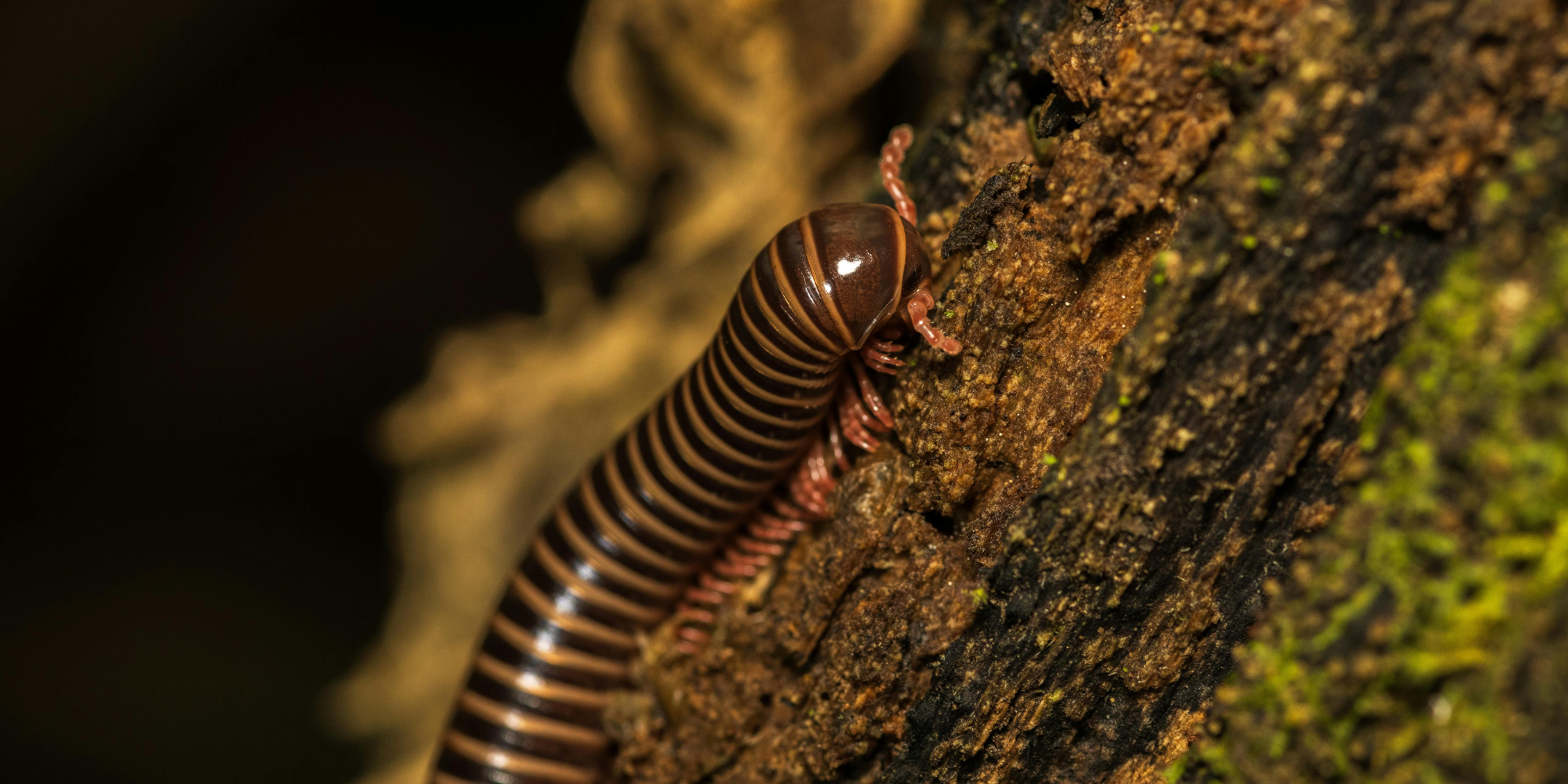A forest's recycling center- and a learning space beneath our feet!
In the heart of every forest lies an incredible story of life, death, and renewal. You just have to know where to look. One of our favorite places to begin? A rotting log.
At first glance, a fallen log might look like just a piece of dead wood. But look closer, and you'll find it's teeming with life. In fact, it's both a habitat and an ecosystem- a home for many, and part of something much bigger.
In this Entry:
- Understanding Ecosystems vs. Habitats
- How Rotting Logs Form and Why They Matter
- Creature Spotlights
- Suggested Activities for Exploration
- Closing Thoughts on Life, Death, and Renewal
UNDERSTANDING ECOSYSTEMS VS. HABITATS
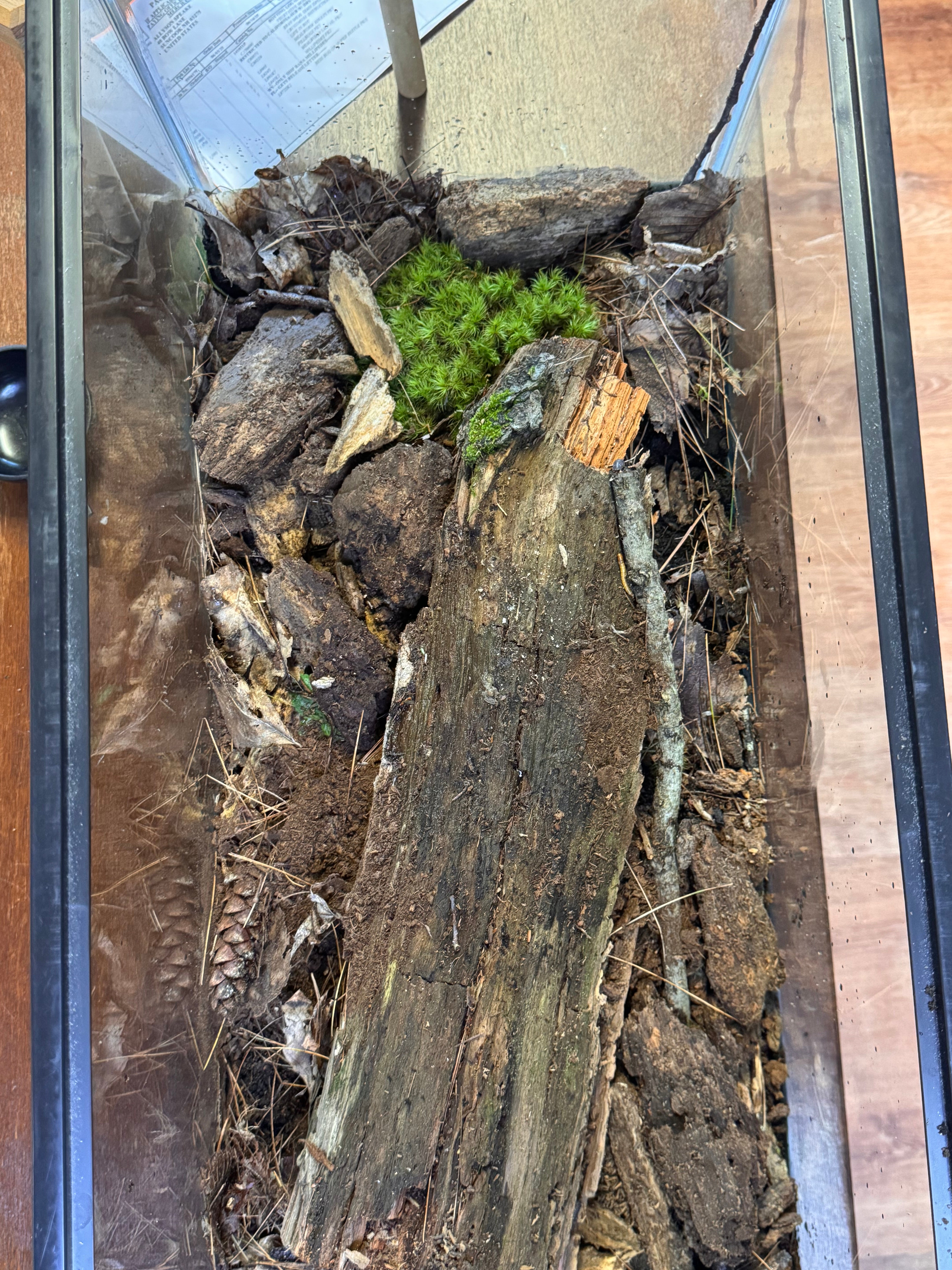
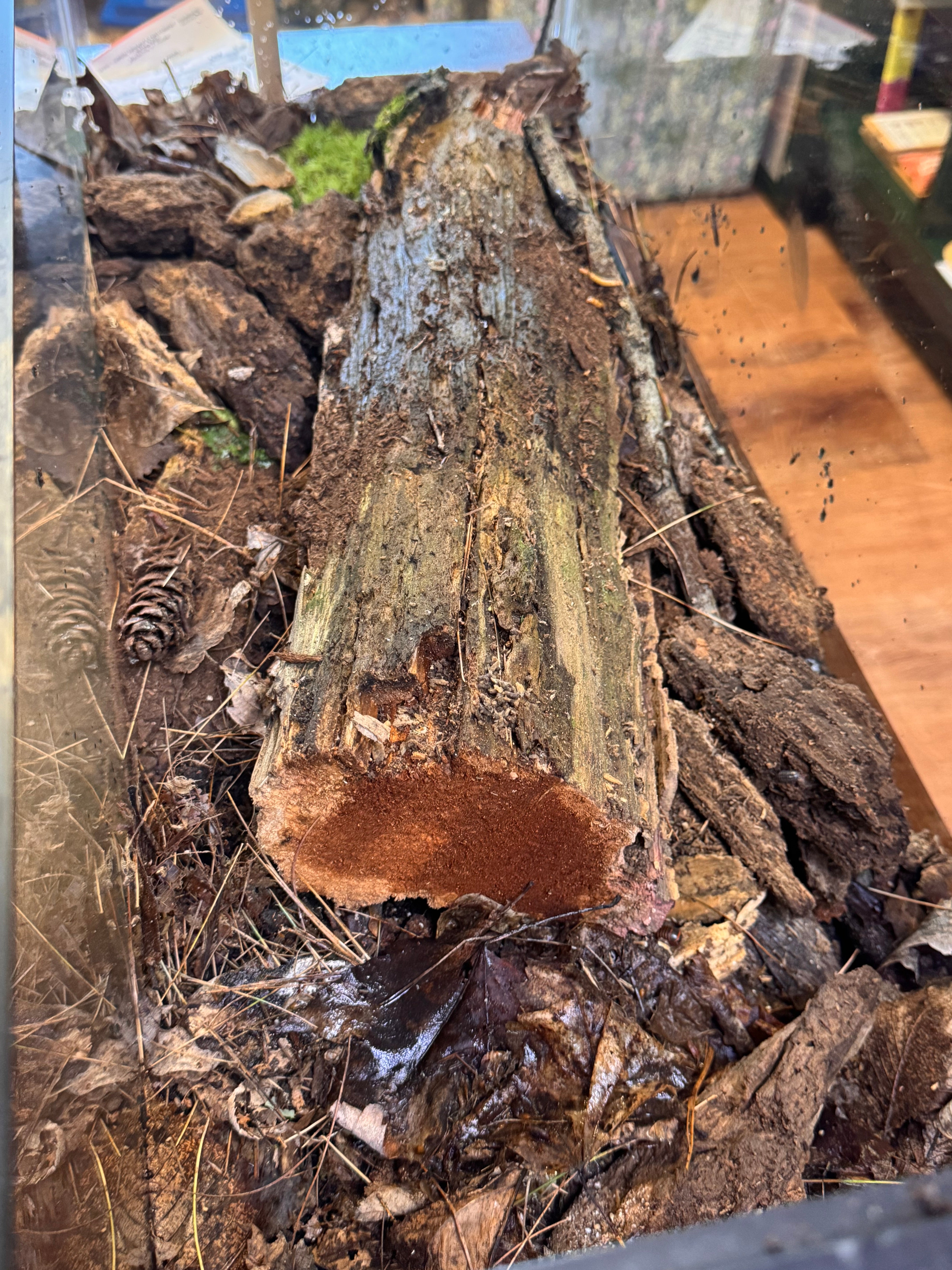
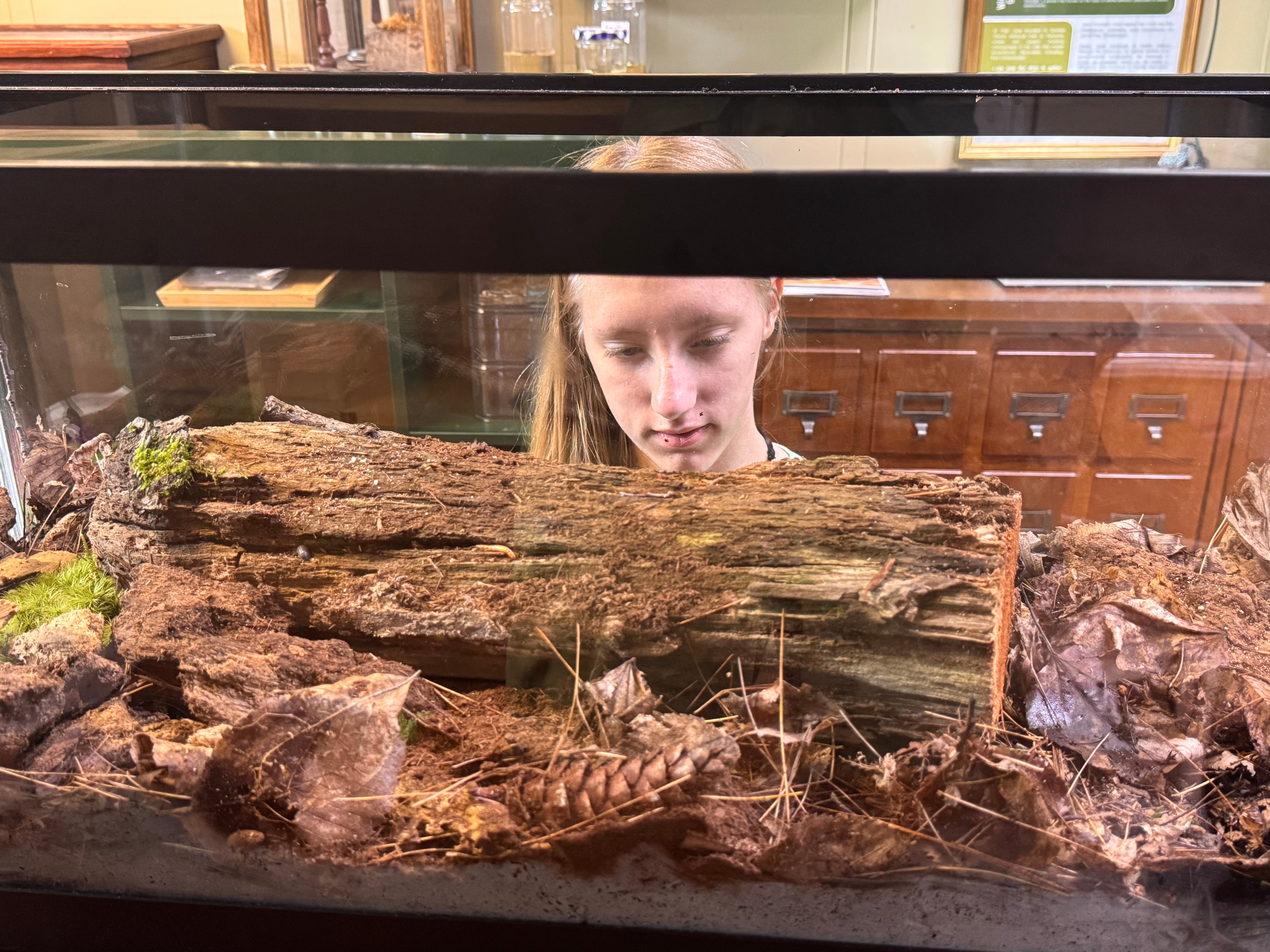
These two terms often get used interchangeably, but they mean different things- and both are important when learning about rotting logs:
Ecosystem: A broad term that describes a community of living organisms and their physical environment. It includes plants, animals, fungi, bacteria, soil, water, air, and even temperature and light.
Habitat: A more specific term that refers to the place where a particular organism or group of organisms live.
So a rotting log community is both:
It is its own small ecosystem- complete with producers, decomposers, and consumers- and it also serves as a habitat for many organisms, from pill bugs to beetles to fungi.
HOW ROTTING LOGS FORM AND WHY THEY MATTER
Rotting logs are part of the forest's life cycle. Trees die from storms, disease, drought, fire, or simply old age. Sometimes even a healthy tree falls after a heavy wind or waterlogged soil. Once it's on the ground, it slowly begins to break down and give life to something entirely new.
Over time, a rotting log becomes homes to beetles, worms, fungi, mosses, salamanders, and countless others. The types of creatures you find will depend on how long the log has been decomposing, what season it is, and how moist or shaded the area is.
Eventually, the wood becomes rich, dark soil. The nutrients released feed the roots of other trees, and the cycle begins again.
CREATURE SPOTLIGHTS
Pill Bugs & Sow Bugs (Terrestrial Isopods)
Often mistaken for insects, these tiny crustaceans are more closely related to crabs and lobsters! They have seven pairs of legs, breathe with gills, and live in moist environments like leaf litter and logs. Pill bugs can roll into a ball when disturbed (sow bugs cannot), and both help break down plant material as they feed.
- Fun Fact: Isopods molt in two parts- first the back half, then the front! -
Millipedes
These peaceful arthropods have two pairs of legs per body segment and tend to curl into a spiral when startled. Millipedes feed on decomposing leaves and wood, helping to recycle nutrients into the soil.
- Fun Fact: Some millipedes secrete a foul-smelling fluid when threatened... but it's harmless! -
Small Darkling Beetles (Tenebrio)
Darkling beetles and their larvae (mealworms) are scavengers of the forest floor, feeding on decaying plant and animal matter. They're slow-moving and tend to hide in dark, damp places like logs.
- Fun Fact: While they can fly, darkling beetles usually don't! They prefer to stay close to the ground! -
Mealworms (Tenebrio Larvae)
Mealworms are the larval form of darkling beetles. They feed on dead insects and vegetation, growing through several molts before pupating into adult beetles.
- Fun Fact: Mealworms are often used in composting! They're excellent decomposers! -
Bess Beetles
Large, docile, and shiny black, bess beetles live in small family groups within rotting logs. They tunnel through wood, feeding on fungi and preparing chambers for their larvae. Bess beetles communicate with over 12 types of squeaks!
- Fun Fact: Adults care for their young and share food- making them unusually social for beetles! -
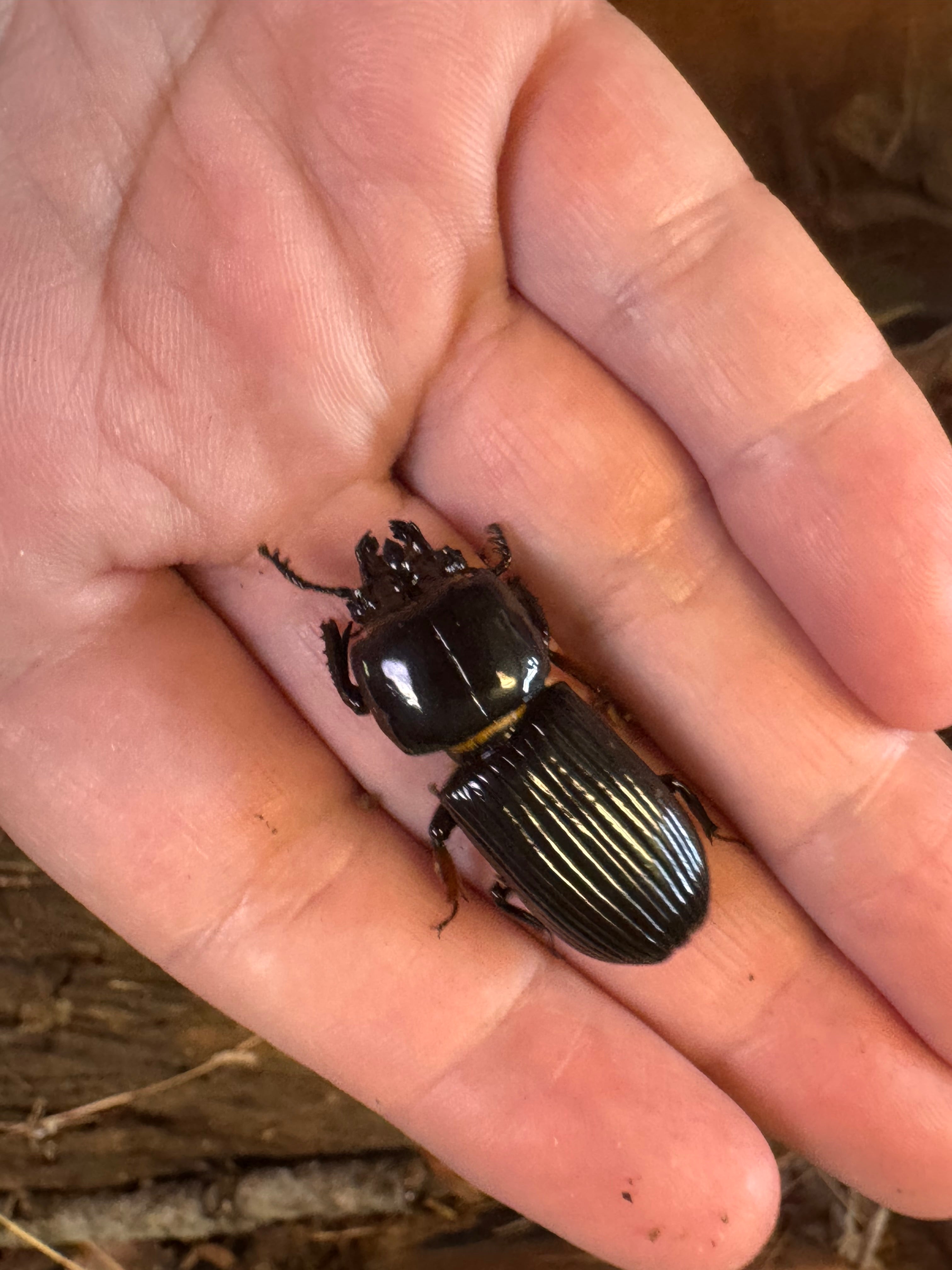
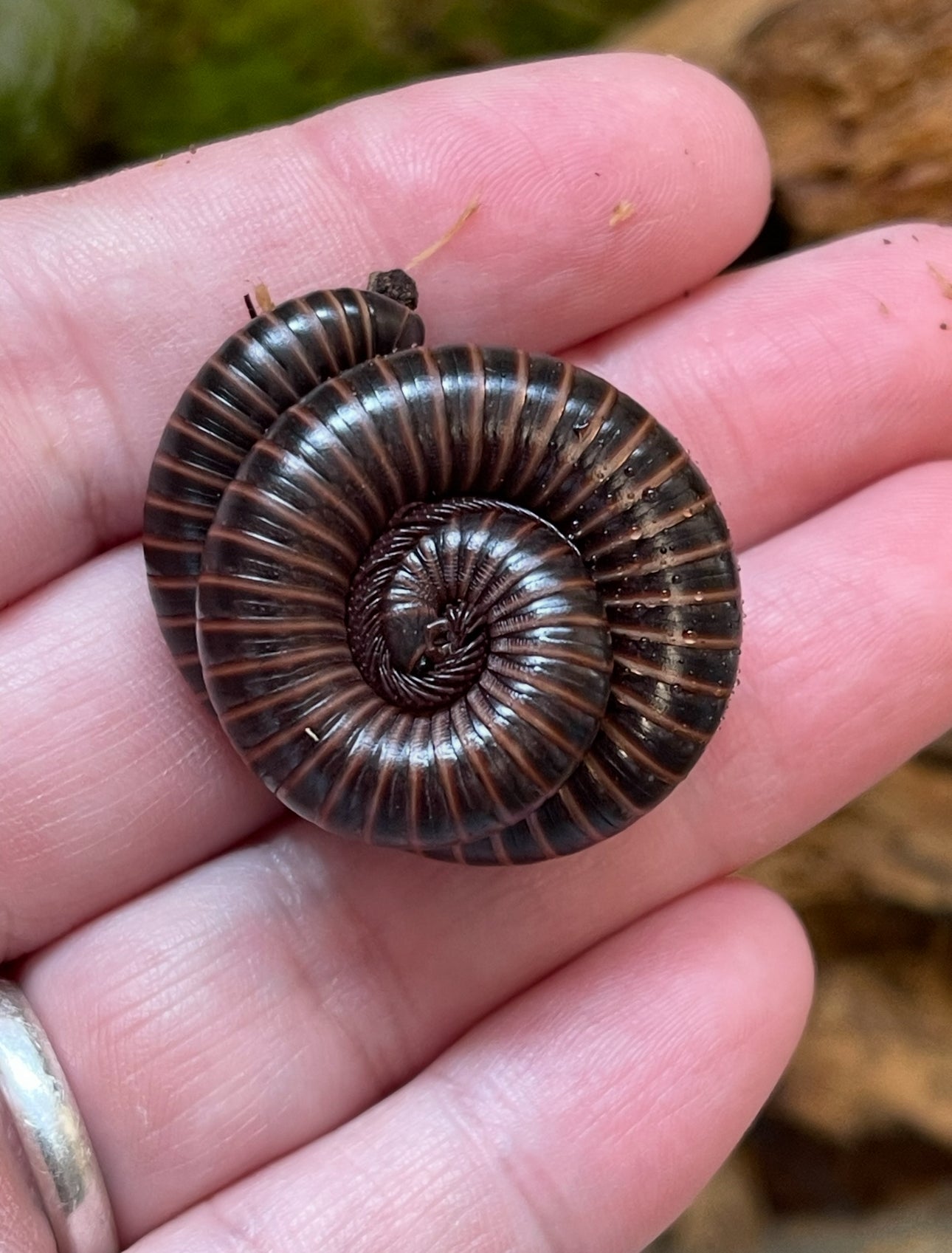
SUGGESTED ACTIVITIES
Here are some meaningful, hands-on ways to explore a rotting log community with your children or students:
- Start a Conversation
Ask, "What's an ecosystem?" and "How does this log show us what one looks like?"
- List the Components
Identify the living (biotic) and the non-living (abiotic) parts of the log ecosystem.
- Research the Creatures
Choose one decomposer to learn more about. What does it eat? Where does it live? How does it help the forest?
- Photo Journal
Take weekly photos of a rotting log and note the changes. What's new? What's disappeared? What signs of life are visible?
- Map a Microhabitat
Sketch or label parts of the log and note where each organism is found (under bark, in soft wood, etc.)
- Talk about Death in Nature
Have an open discussion about the role of death in supporting life- how this fallen tree becomes the foundation for new growth.
TALKING ABOUT HOW THE END IS ONLY THE BEGINNING
A rotting log may look like the end of something- but it's really the beginning. It's where energy is recycled, where ecosystems quietly hum with life, and where some of nature's most important workers do their jobs unnoticed.
By spending time around rotting logs, asking questions, and observing changes over time, kids learn that even decay is full of purpose- and that every part of nature plays a role.
So next time you're in the woods, pause beside a fallen tree. The story unfolding there is one of life, loss, and lasting connection- and it's one of the most beautiful lessons the forest has to offer.
Want to create your own rotting log habitat at home? Learn how to build one step-by-step in this earlier Logbook entry.
Download our free Rotting Log Coloring Page to spark interest in your family!


